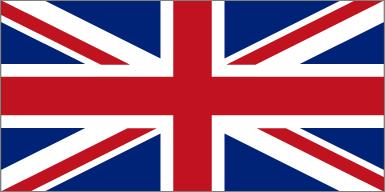BAe Hawk
Mk.50

Navigation Menu
Home Hawk Variants
Hawk pre-production
T-45A Goshawk for USA Hawk Technical
Hawk scale drawings Hawk
Flight Simulator
Hawk models for FS98 Hawk Scale Models
Aircraft Info Pages
Aircraft Images Pages
Flight Simulator Pages
Hawk Mk.T1 for UK
Hawk Mk.T1A for UK
Hawk Mk.50 prototype
Hawk Mk.51 for Finland
Hawk Mk.52 for Kenya
Hawk Mk.53 for Indonesia
Hawk Mk.60 for Zimbabwe
Hawk Mk.61 for Dubai
Hawk Mk.62 for Venezuela
Hawk Mk.63 for Abu Dubai
Hawk Mk.64 for Kuwait
Hawk Mk.65 for Saudi Arabia
Hawk Mk.66 for Switzerland
Hawk Mk.67 for South Korea
Hawk Mk.100 prototype
Hawk Mk.102 prototype
Hawk Mk.103 for Oman
Hawk Mk.108 for Malaysia
Hawk Mk.109 for Indonesia
Hawk Mk.115 for Canada
Hawk Mk.127 for Australia
Hawk Mk.200 prototype
Hawk Mk.201 RDA prototype
Hawk Mk.203 for Oman
Hawk Mk.208 for Malaysia
Hawk Mk.209 for Indonesia
T-45C Goshawk for USA
Hawk cut away
Hawk profile images
Hawk models for FS2000
Hawk models for CFS 1
Hawk models for CFS 2
Thus the 8th airframe from the production line was taken as a company funded demonstrator. The aircraft was given the British civil registration G-HAWK and first flew on 17th May 1976. G-HAWK was built as a Mk.50 - and incorporated all the export options available - provision for 5 pylons, with fuel lines plumbed to the inboard stations. In addition to much avionics component changes (from the RAF Hawks), G-HAWK also has full instrumentation in the rear cockpit
Later on, G-HAWK was also allocated the British military serial ZA101 - to enable it to carry live ordnance in UK airspace.
Extensive use was made of G-HAWK/ZA101 and it undertook many demonstration flights and tours - starting in 1978, when it toured, Saudi Arabia, Dubai, Abu Dhabi, Oman, Kuwait and Jordan. Also during this tour the Hawk was demonstrated to the Egyptian Air Force, who were sceptical of the brochure performance. The sortie consisted of a 326nm (605km) circuit, carrying 5 x 1,000lb (454kg) bombs and included a 475 knot (880km/h) dash to represent the attack phase. The Hawk naturally made it easily, with fuel to spare.
G-HAWK/ZA101's most famous tour was in June 1981 when it undertook a US tour, as part of the VTXTS contest for the US Navy's next trainer system. The tour lasted 30 days and involved 108 sorties, with over a hundred of those flown within the USA, and constituted 118hrs of flying time. Over 100 USN pilots were able to experience the Hawk.
A further Persian Gulf tour followed in April 1983, touring Saudi Arabia, Kuwait & Bahrain. After completing the tour, G-HAWK/ZA101 returned to Dunsfold briefly and 11 days later flew out to the USA once more, as part of the continued VTXTS programme. A further 55hrs of flying time was undertaken, introducing a further 54 pilots, senior USN staff and politicians to the Hawk.
In late 1983 a visit was made to Berne, Switzerland to demonstrate to the Swiss Air Force representatives at Emmen and Sion.
G-HAWK/ZA101 was also the only airframe available to BAe that could be used to develop and refine the aircraft. Thus it was also used to test engine modifications, refinements to the wing & flap system and any internal equipment changes proposed or required for export markets.
Over the years G-HAWK/ZA101 has worn a number of different colour schemes, to match the intended export markets requirement. Initially G-HAWK had BAe's idea of a desert camoflage - aimed at the Middle East market. One of the best known schemes it wore, was the psuedo USN training colours it wore for the VTXTS programme.
As has been detailed previously, G-HAWK/ZA101 has also undertaken many development tests & refinements, which have subsequently found their way into production models of the future. G-HAWK/ZA101 is today designated a Mk.100 - having been converted to the latest standard, and is still used on occasion by BAE Systems, from Warton in Lancashire. However, G-HAWK/ZA101 is now 25 years old and most of the modern demonstration work is undertaken by BAE System's newer aircraft - serialled ZJ100 (a Mk.102D aircraft - detailed separately).
Demonstrator

Copyright © 2001 - Steve Bezant
All Rights Reserved.
Designated trademarks & brands are the property of their respective owners.
All page content and graphics are protected by copyright law.
Unauthorized reproduction could result in criminal prosecution.
This page was last updated on : 01 January 2001
Please help by reporting any broken links to the webmaster